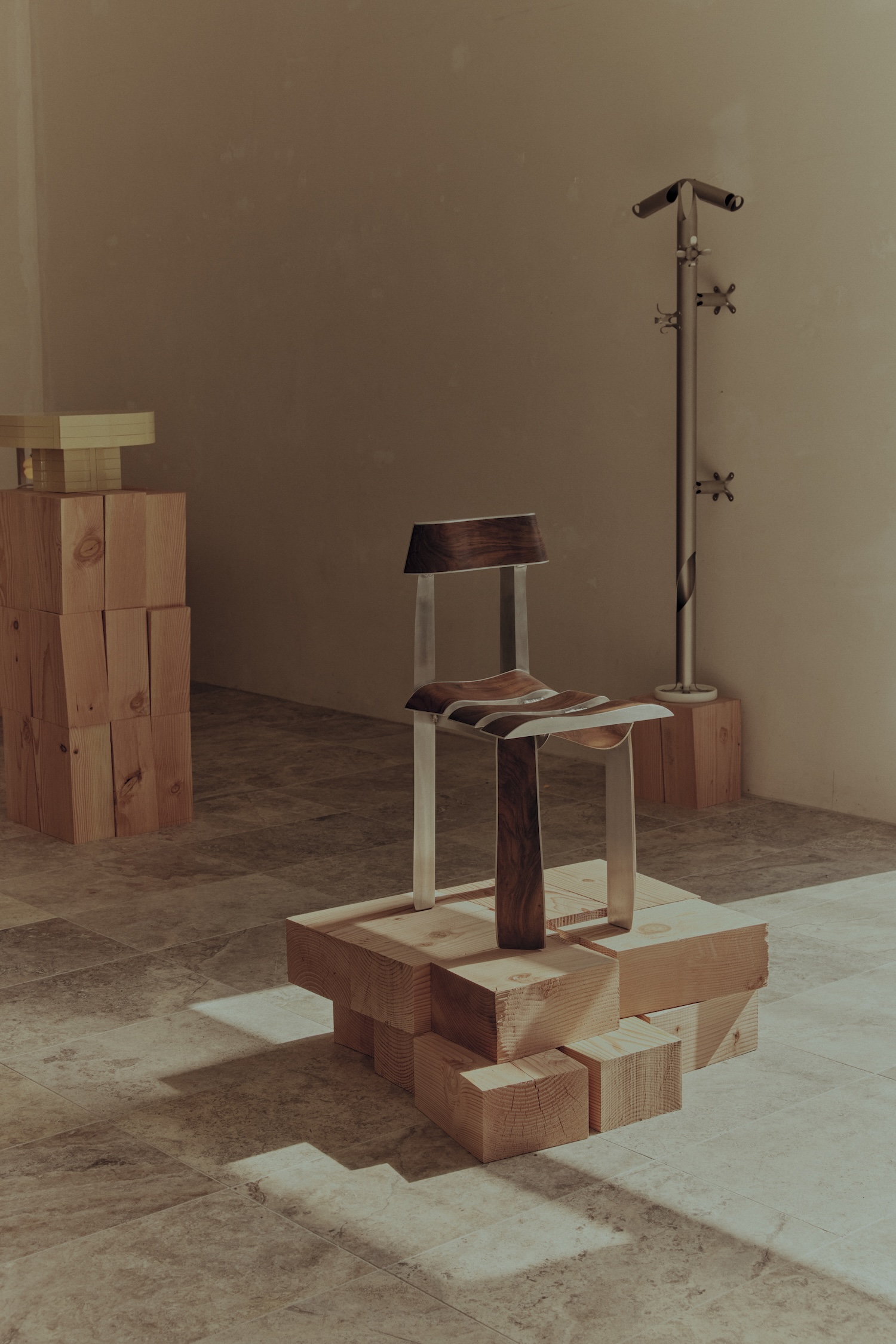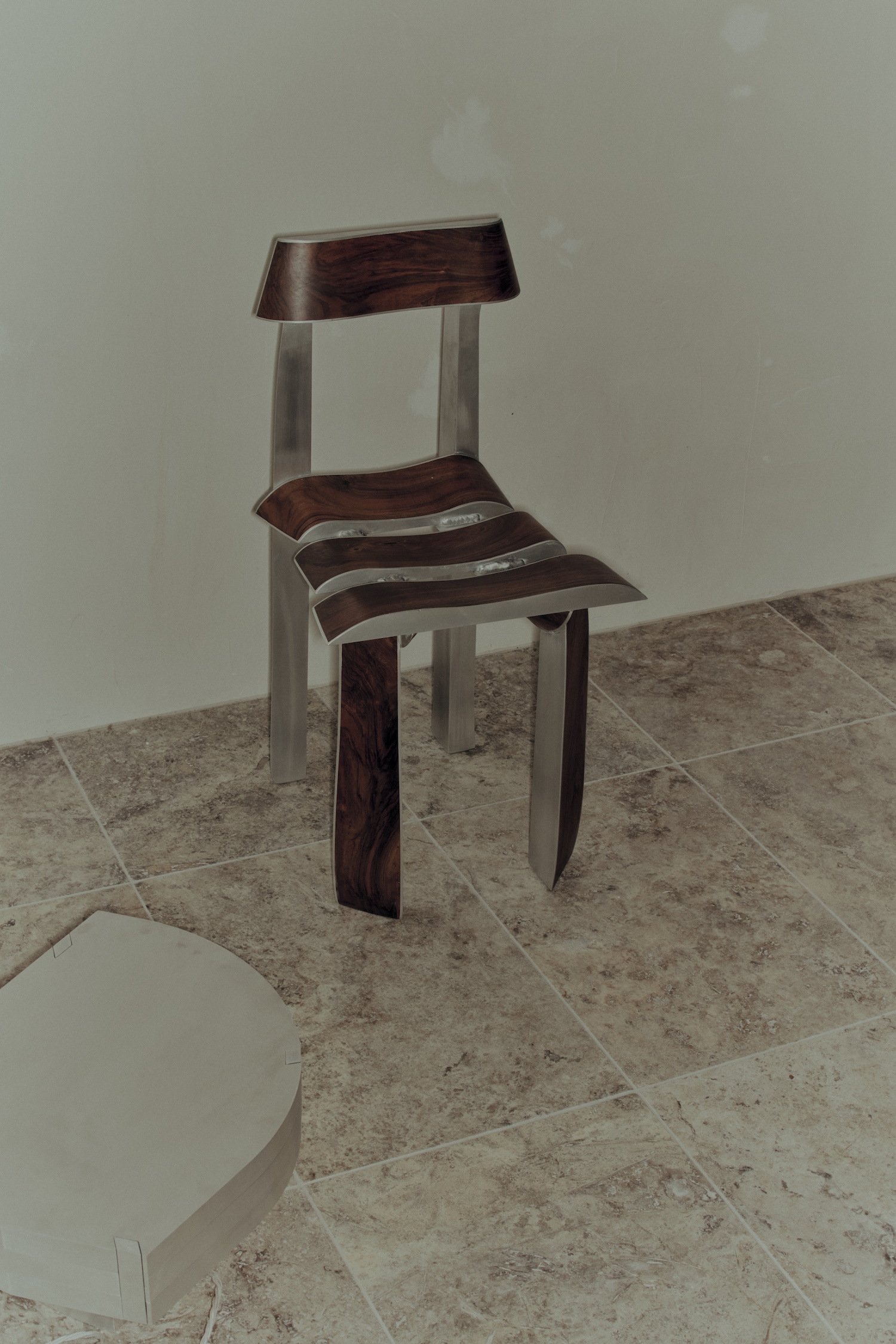Infilled Chair is a minimal chair created by London-based studio Soft Baroque presented at Oigåll Projects for their Head Over Heels exhibition. The Infilled Chair sits defiantly, its walnut frame creating a stark silhouette against the white wall. At first glance, it appears almost conventional—the familiar form of a dining chair with its expected proportions. But look closer and the aluminum infill reveals itself not as mere decoration but as a fundamental reimagining of what negative space can become in furniture design.
Nicholas Gardner and Saša Štucin’s London-based practice has always operated at the fertile intersection of functional object and conceptual art. This chair embodies their stated mission to “blur the boundaries between acceptable furniture typologies and conceptual representative objects.” The walnut frame provides a warm, traditional skeleton that grounds the piece in furniture history, while the aluminum infill transforms what would typically be empty space into something tangible and essential.
This material dialogue between the organic warmth of walnut and the industrial coolness of aluminum creates a productive tension that runs throughout their work. The chair doesn’t simply reference historical precedents; it actively interrogates them. One thinks of Michael Thonet’s iconic No. 14 chair from 1859, whose revolutionary steam-bent beechwood technique created a new language of negative space in seating. Gardner and Štucin’s work doesn’t reject this lineage but complicates it, asking what happens when the void becomes filled.
The Infilled Chair arrives at a moment when our relationship with domestic objects has fundamentally shifted. As the exhibition text for “Head Over Heels” provocatively suggests, “These objects are raising our children—replacing our children—loved like our children.” In our increasingly digital existence, physical objects carry new emotional weight. They anchor us in materiality when so much of our lives exists in the ephemeral digital realm.






